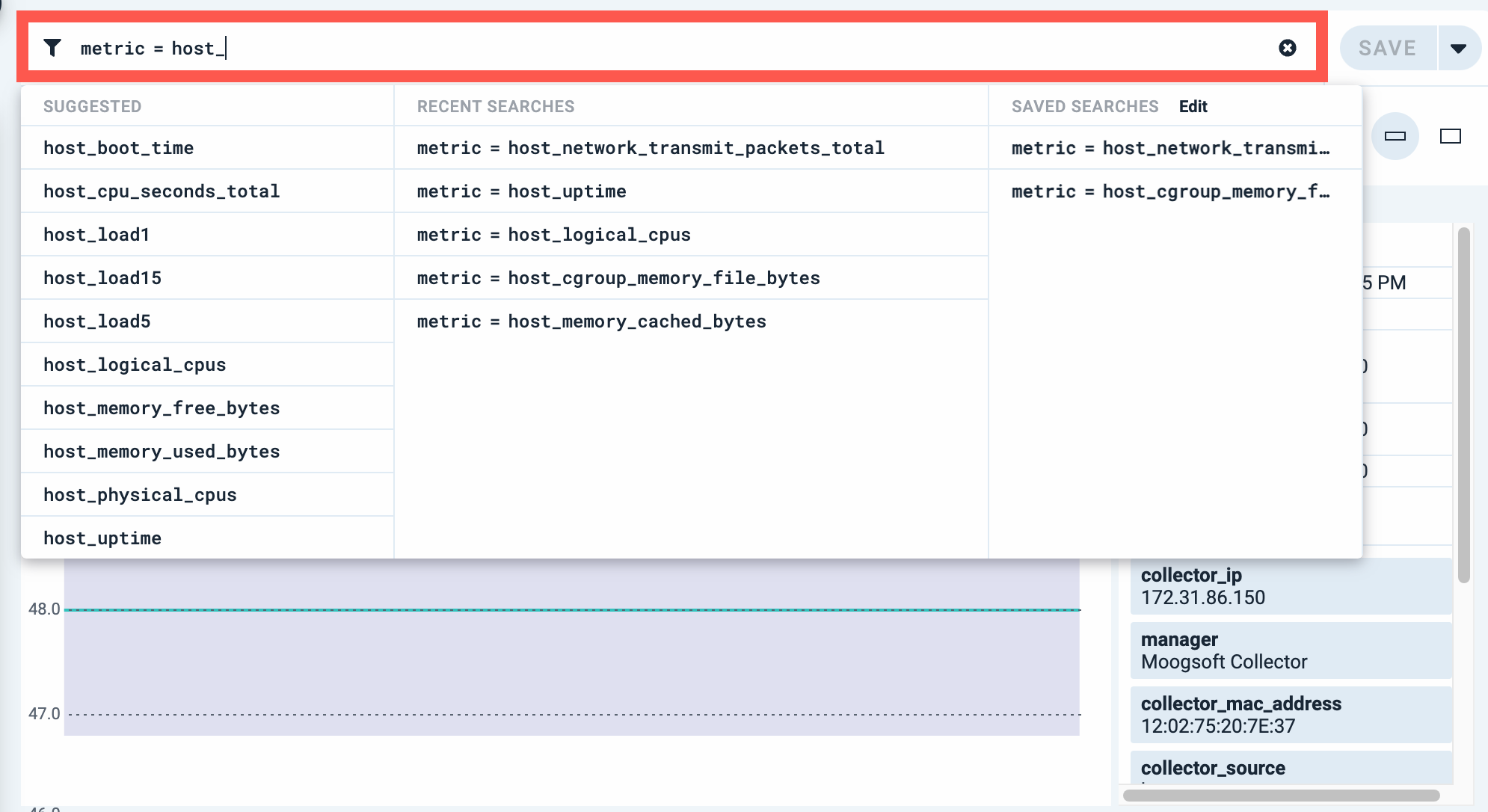Search and filter metrics
You can filter metric charts on the Metrics page using "smart look-ahead" filtering. Place your cursor in the search field above the table. A pull-down menu shows the valid data fields or operators for that position in the filter string. Begin typing a metric name, and the filter will suggest possible matches.
 |
After you validate a filter, you can save, edit, reuse, and delete it as needed. You can also copy and paste a filter string into a relevant API request. You can define compound filters such as:
source = wbsrv01.myorg.org AND metric = host_load15
Click the down arrow in the Save button to the right of the query box.
Click Save as new query to open the Save and Manage Queries dialog.
Enter a name for the query, and then click Save.
To use a previously saved query, click inside the query box. Saved queries appear under Saved Searches on the far right. Click a query to apply it.
To apply a specific query every time you access the Metrics page, click the down arrow in the Save button to the right of the query box.
Click Set as default to use the currently applied query as the default.
To set a saved query as the default, click a query in the list to first apply it and then click Set as default.
Click inside the query box and click Edit in the Saved Searches column.
The Save and Manage Queries dialog opens.
Click the trashcan icon next to the query you want to delete, then close the dialog.
Create a query using the query box and menu prompts.
Click inside the query box and click Edit in the Saved Searches column.
The Save and Manage Queries dialog opens.
Enter a name for the current query in the Name for Query field.
Click Save.
Note
It is good practice to use the smart-lookahead features to create metric filters.
Always view scope queries for use in metric policies in a chart first to ensure their validity before using them in metric policies.